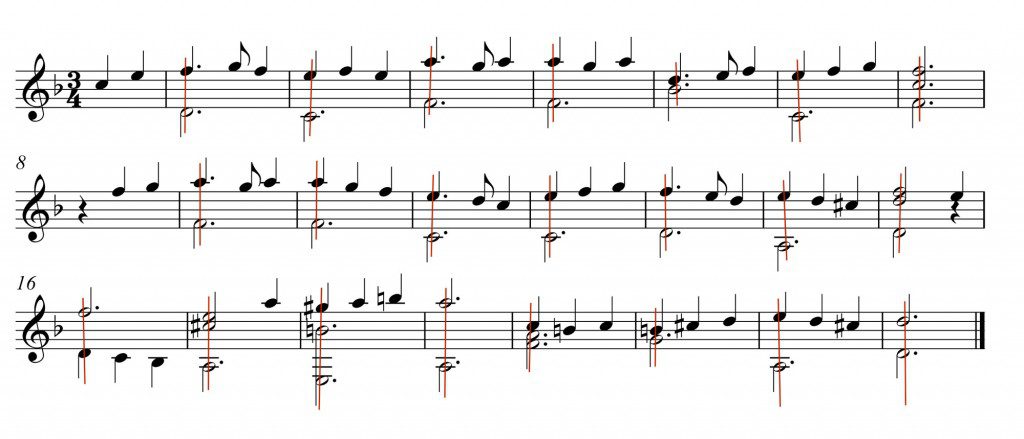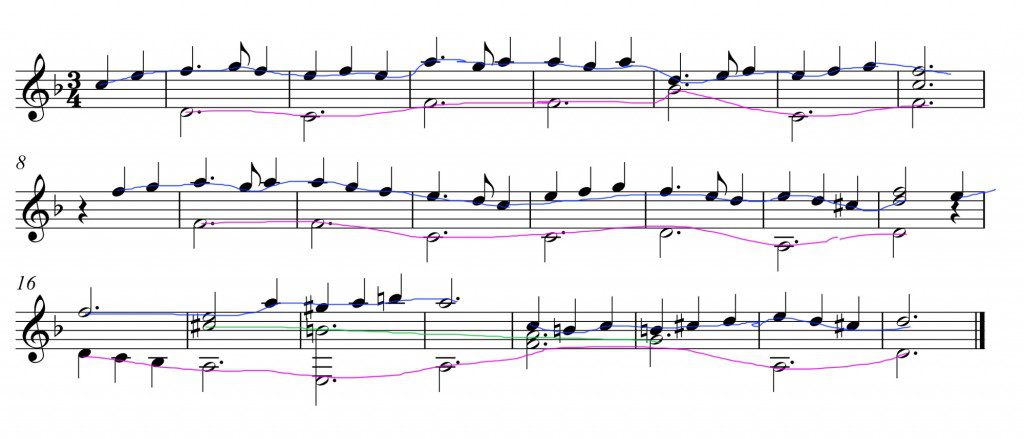Thinking horizontally is something that doesn’t come very naturally to guitarists. But working on horizontal phrasing is the key to playing long beautiful melodies.
First let me clarify what I mean by the term ‘horizontal’. When we look at a guitar score that has chords and polyphony we will stack those notes in our head to think what chord that makes or how to finger them. That is thinking ‘vertically’. If we always think vertically, then we start marking the beats in each bar, even if it doesn’t suit the music.
Thinking horizontally is when you consider where the notes are going and where they have come from. If you have a clear idea of the whole melody you will play it quite differently than if you were reading it one note at a time. By analogy, it is like you had to read a speech to an adoring public but you were only given one word at a time on the teleprompter, you just wouldn’t know how to link each word, and shape each sentence. It would come out. One. Word At. A. Time. Vertical….
As I said, this doesn’t come naturally on the guitar partly because it is not a sustaining instrument and we don’t have to breathe to make the notes sing. So, the best way to get around this is to put the guitar down for a moment, and sing along! Even if your voice is not top notch (points at himself) you will still phrase more horizontally when you sing. Once you have graced us with your beautiful voice a few times go back to the guitar and play through the phrase trying to imitate your singing line. That is playing horizontally!
The bar line is not your friend
One more thing before you go.
Those rhythmic divisions between the bars, you know, the bar lines. Somewhere along the line you were probably taught that the downbeat, the “1” is the strongest beat in the bar. Well, it may be in a general way but it doesn’t mean that you have to accent every note in a melody that lands on the down beat. If you do, then the melody starts to be broken up into sections and that stops a phrase from being formed. So instead of playing all your lines as 1234,1234,1234,1234 take care to look at the phrasing and figure out where the accents will actually suit the music, rather than the bar lines.




This is very good. Ii helps to really understand the phrasing. I noticed that composer/player Agustin Barrios thought horizontally on the fingerboard as well. I found as I began to work on his compositions it was a whole new level and a whole new way of thinking for me.
Thank you for the “slow practice” lesson. I played a piece better than I ever have before and I have been playing it for many years. It is Brower’s Etude #1